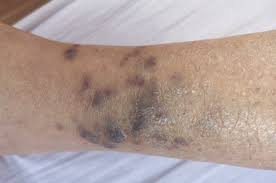
Kaposi’s sarcoma (KS) is a rare type of cancer that affects the cells that line the blood vessels or lymphatic vessels. KS can occur in several forms, including classic, endemic, iatrogenic, and epidemic (or AIDS-related) KS. Here are some key facts about Kaposi’s sarcoma:
Causes:
- Kaposi’s sarcoma is caused by a type of herpes virus called human herpesvirus 8 (HHV-8), also known as Kaposi’s sarcoma-associated herpesvirus (KSHV).
- Risk factors for developing Kaposi’s sarcoma include having a weakened immune system, being infected with HIV, and being of Mediterranean or African descent.
Symptoms:
- Kaposi’s sarcoma usually appears as patches or nodules on the skin, which may be red, purple, or brown.
- The lesions may be flat or raised and may itch or be painful.
- KS can also affect other parts of the body, such as the lungs, gastrointestinal tract, and lymph nodes.
Diagnosis:
- A biopsy is the only way to definitively diagnose Kaposi’s sarcoma.
- During a biopsy, a small sample of the affected tissue is removed and examined under a microscope to determine if cancerous cells are present.
Treatment:
- Treatment for Kaposi’s sarcoma depends on the type and extent of the cancer, as well as the patient’s overall health.
- Treatments may include radiation therapy, chemotherapy, or targeted therapy.
- Antiretroviral therapy (ART) may also be used to treat Kaposi’s sarcoma in people who are infected with HIV.
Prognosis:
- The prognosis for Kaposi’s sarcoma varies depending on the type and extent of the cancer and the patient’s overall health.
- In people with AIDS-related KS, the prognosis is generally worse than in other forms of the disease, as the cancer may be more aggressive and difficult to treat. However, with appropriate treatment, many people with Kaposi’s sarcoma are able to manage the disease and live for many years.
